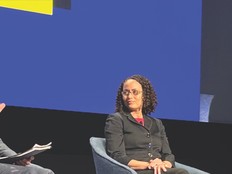4 Ways CIOs Should Approach IT Change
Change caused by new technology can be multifaceted. On the one hand, technology improves productivity, reduces costs and makes possible what wasn’t before. On the other hand, it disrupts vocations, replaces human labor and even eliminates entire industries. Many technologies fail at either the invention, innovation or implementation stage. But those that succeed create value and result in incredible user adoption.
With that as a backdrop, the job of a federal CIO can be challenging. A federal CIO must deal simultaneously with demands for change, resistance to change (caused by legacy systems and processes), and the constraints of fixed budgets and limited human capital. But change waits for no CIO.
Often, we’ve seen agencies try to bring in new technologies only to see them overtaken by newer innovations by the time the acquisition cycle is completed. And much has been written about certain IT project woes — implementing new technology to improve program and management results is difficult. Through all of this, agency customers expect the same rate of technology change at work as they do at home; meanwhile IT security lapses make national news every day. It can be overwhelming.
The Path Forward
Still, there are reasons to tackle the challenges that federal CIOs face. Agencies enjoy performance improvements through existing technology, but it’s the promise of new IT that enables them to do what was previously impossible. Mobility and Big Data are two trends that are transforming the way government is delivered.
Therefore, CIOs should craft a go-forward strategy that incorporates relevant, modern technology, built around several basic goals:
Reduce duplication
Most agencies have tried multiple times, using IT, to solve what is essentially the same problem. Reducing duplication in projects and operations will provide the greatest possible payback.
Simplify the computing environment
Think of computing environments as a set of moving parts — different devices, operating systems and architectures. The more moving parts, the more complexity, which leads to more points of failure and higher costs to maintain and operate. CIOs need to create and manage computing environments that are simple and relatively homogeneous, and manage them with vigor for security, efficiency and redundancy.
Consolidate
Federal CIOs have tried to consolidate pieces of IT with some success. While there is low-hanging fruit — data centers and email, for example — consolidation can still be difficult. But it’s an important part of eliminating duplication and simplifying IT.
Implement service models
Like consolidation, a service model can support deduplication and simplification efforts. Moving to a service model, such as cloud computing, forces the CIO to identify opportunities for the strategies mentioned earlier. It also presents an opportunity to reach outside the agency to constituents and government partners without the capital cost of modernizing a large computing infrastructure.
To pursue these goals, CIOs need to work with other program and management executives to put in place an agencywide governance structure for making and enforcing IT decisions. I see little choice. Most CIOs don’t have the resources to satisfy their customers and secure their organizations' important data without improving their infrastructures consistent with these goals. Despite daunting challenges, they must focus on the promise of IT.






